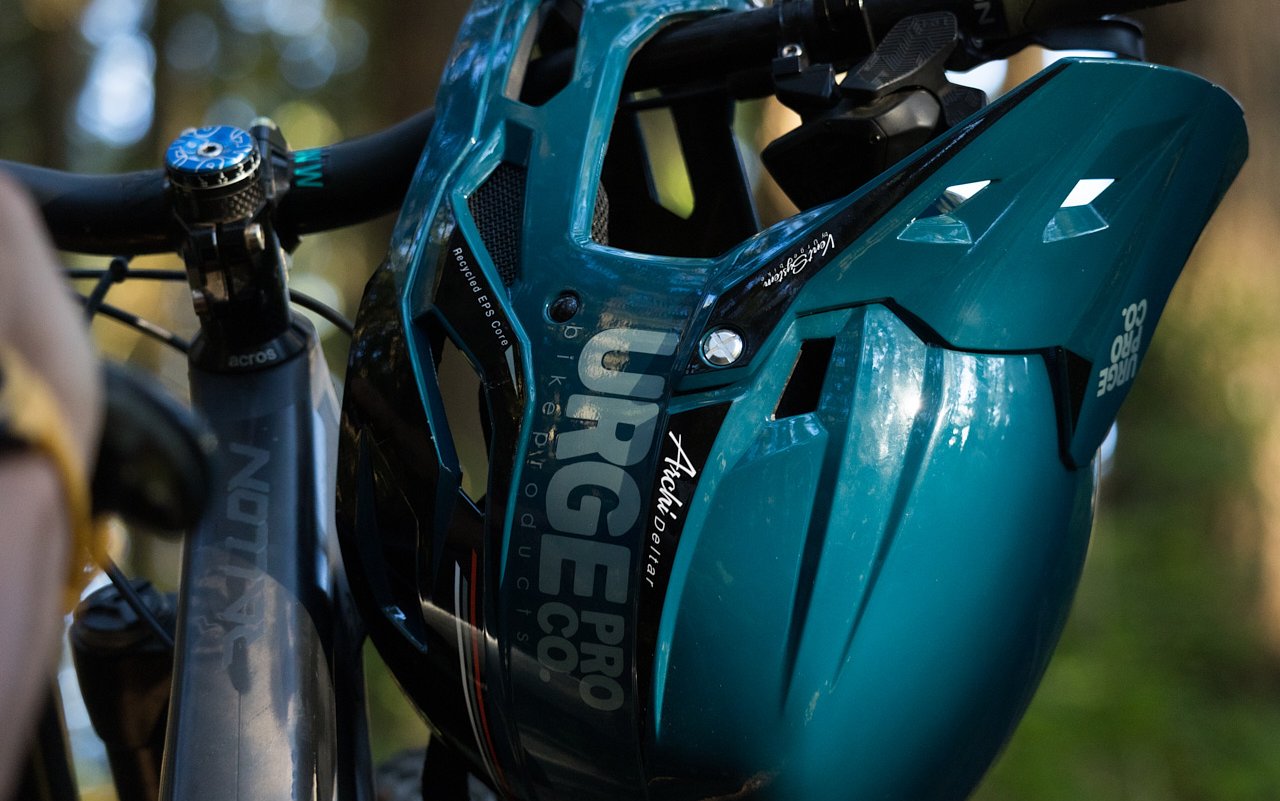
Review
Urge Archi-Deltar Enduro Fullface Helmet
Urge Archi-Deltar is a name loaded with foreign words I didn't know until I started googling them. Archi has multiple meanings associated with Religion and Language, but the meaning that made the most sense was the "Sun Ray", the first light that falls onto the earth after sunrise. Nice. Deltar apparently was the first mechanical computer that measured water flow and levels at dams and tides in the oceans. Hence the Urge Archi-Deltar.
No wonder Urge has always been a mystery for me in the head protection world until now. I know they are European and as Europeans tend to do, Urge had some Renaultesque designs in their catalog. This design exploration made them less often the first choice for the consumer looking for a helmet in North America. We Canadians meanwhile, were introduced to the Urge, perched atop of our local enduro hero, Jesse Melamed. If Jesse trusted his head with Urge, so could we.
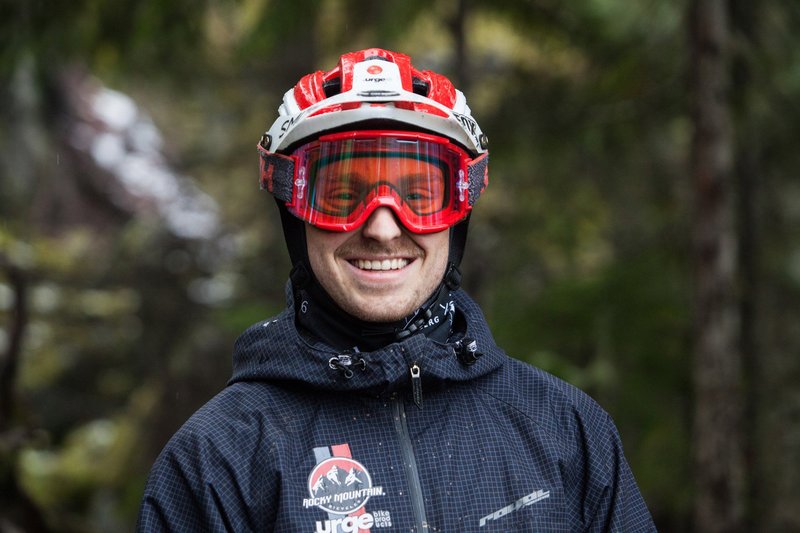
Young Jesse Melamed, Photo : Hailey Elise
With unique styling and round air ports that resemble dazzle eyes on some butterfly species, it was hard not to stare at those helmets Rocky team wore back then.
Urge Archi-Deltar Petrol specs
Air flow vents: 15
Recycled straps
Recycled EPS
Sizing chart: S: 53-54 cm, M: 55-56 cm, L: 57-58 cm
Shell: Glued
Pads: Eco Nylon
Visor: recycled ABS
Weight: 755 gr Medium (780g as measured Large)
Color: Blue
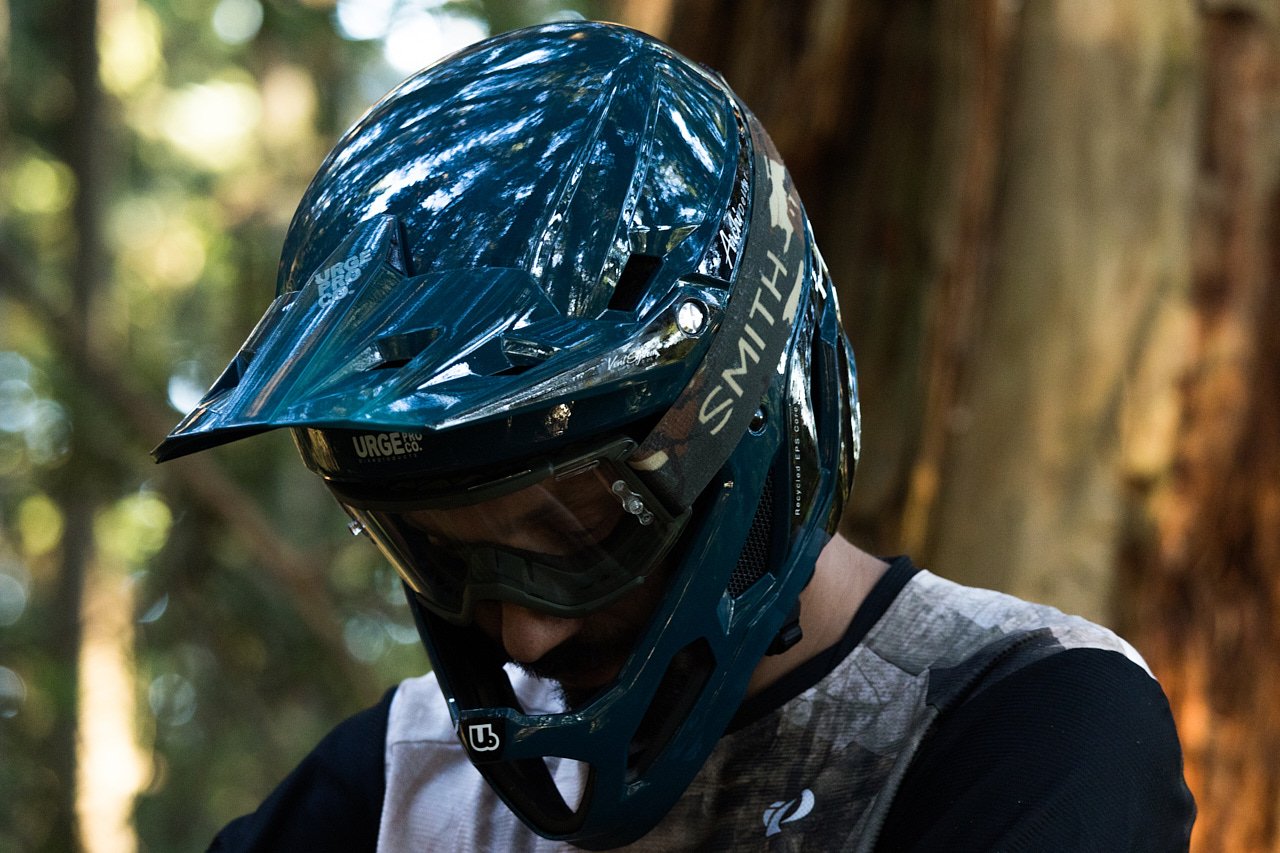
Alloy hardware on the visor is a nice touch.
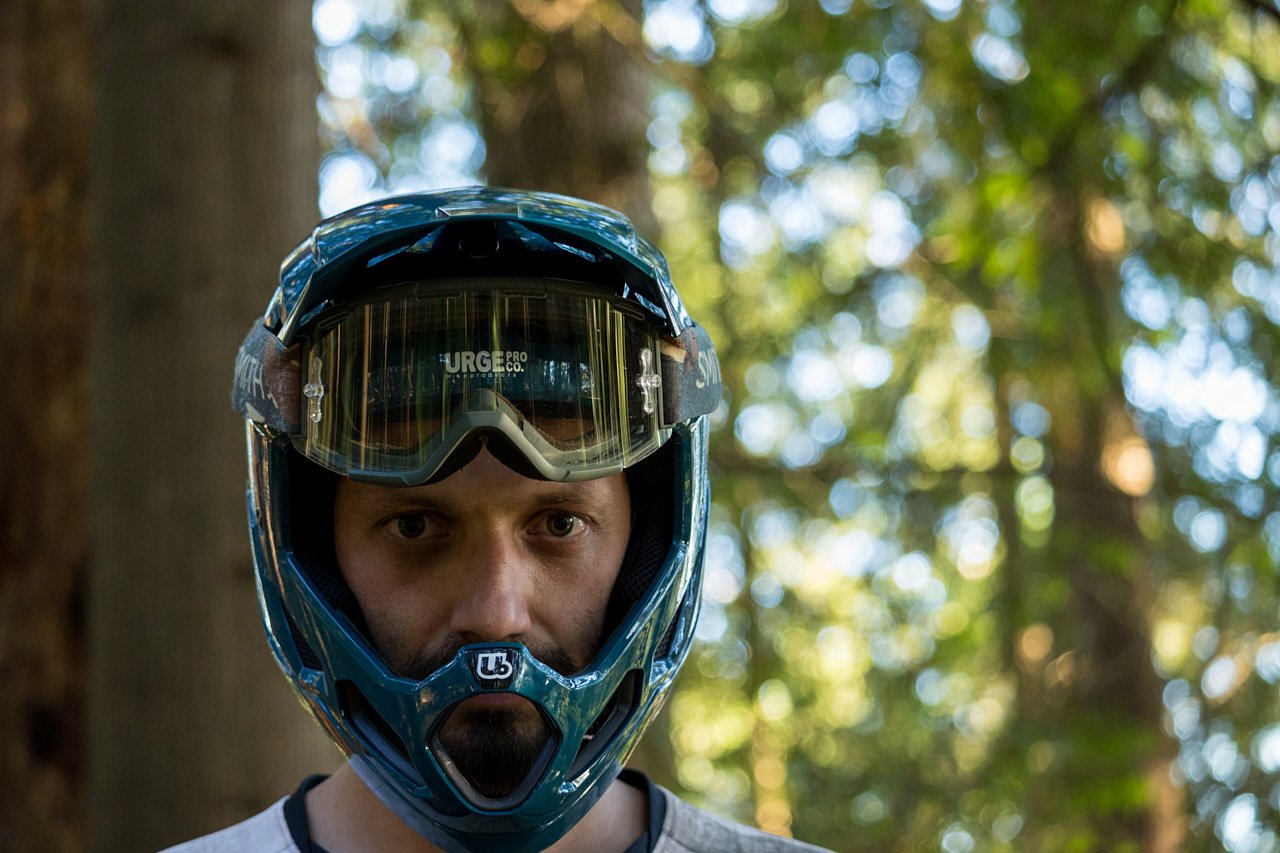
There is room for goggles under the visor, but just barely.
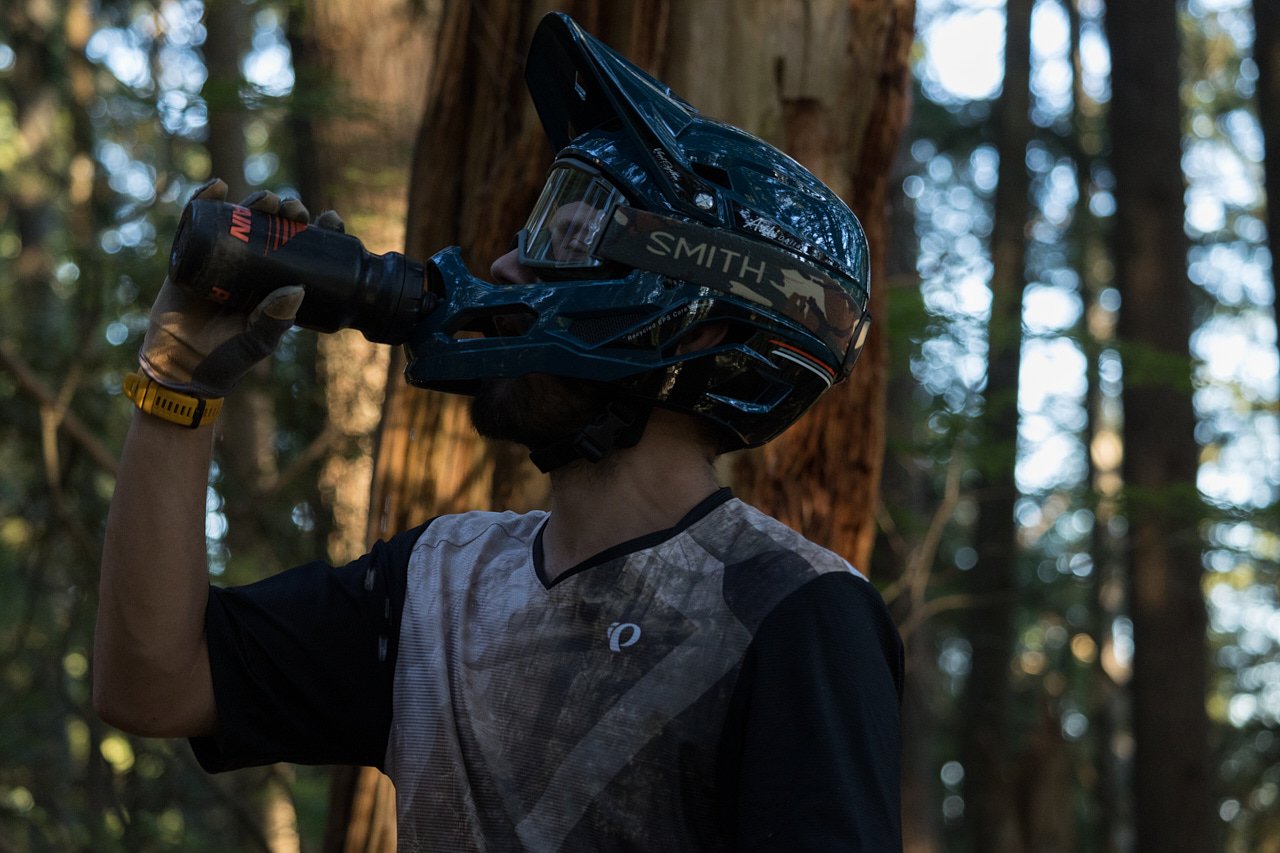
Water goes in here.
The Archi-Deltar is a light helmet. From the moment you pick it up to the moment you buckle it closed, you can tell Urge wanted you to leave this thing on your head the whole ride. On the scale, my size Large weighed in at 780 grams.
When did I become a Large? My solid Medium-sized noggin is apparently a Large in Urge terms. Definitely pay attention to this sizing discrepancy if you order one online. Sizing aside, there is nothing weird about the fit. Actually, it is one of the most comfortable full faces I've put my brain into; there are no perceivable pressure points, the cheek pads gently hold my face without the chipmunk look, and the chin strap's clip buckle is super convenient. What's not to love?
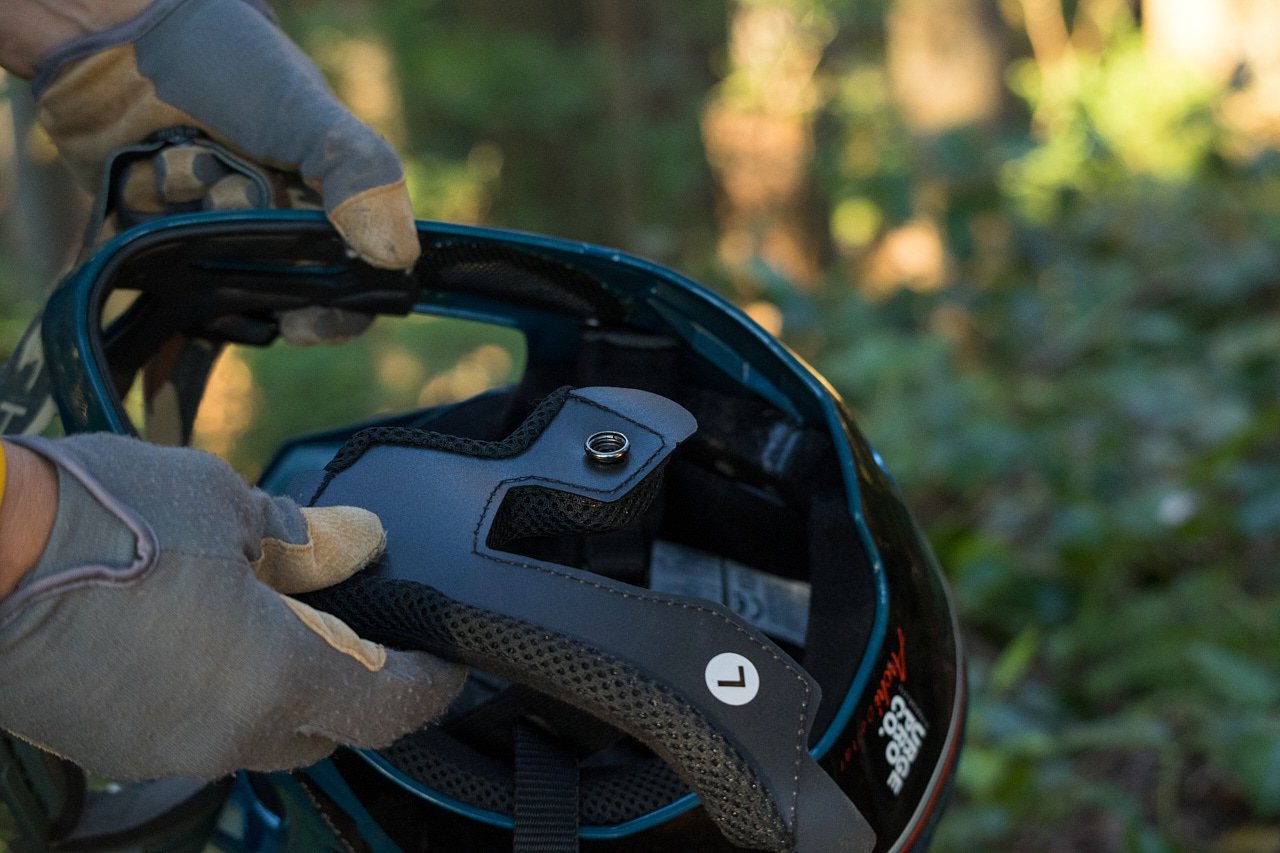
Cheek pad retention via a single button and stiff plastic tabs. Works for me.

Droning out the buzz of the mosquitoes, I could still hear the photog clearly. More steeze, she said.
Climbing & descending with the Urge Archi-Deltar
There are lots of things that go into choosing a full-face helmet: fit, weight, heat venting, clasp, looks, and cost. I picked a rather warm July day to take the Archi-Deltar on its first ride down the local. The day started with an uplift but I knew there would be hike-a-biking as well as pedaling up and out involved in this adventure. The crew noticed the helmet immediately, and were appreciative of its looks and colours. Air vents around the ears meant I could hear every conversation, including Trevor's jabs. One never escapes his ridicule.
As we pedaled and looked for the entrance to a new trail, the faffing began. Being an older falla, Trevor had not taken proper notes of the coordinates. A vague photo was all he had, so we did some up and down on a steep fire road to find the entrance. My helmet stayed on in anticipation that the discovery was near but the whole ordeal cost us a good 45 minutes. Temperatures were rising rapidly in the now late morning sun. It was supposed to be 36°C that day, and we were getting close. The Archi-Deltar was getting warm inside. I could feel the sun's heat but the padding kept the sweating to a minimum. There are no vents on the top of the helmet which I find strange - I figure this was done to retain structural integrity while keeping weight down. Fortunately I was able to stay hydrated thanks to the big opening on the chin bar. There is a similar opening on the Smith Mainline helmet but I've seen some DH helmets with an obstructed path to the mouth. Sure, a rogue stick could find its way to my face through that hole but I hope we never have to cross that bridge.
Once we spotted the trailhead and started descending, the inside of the helmet became a more pleasant place to be. Air flow felt adequate even at the lower speeds.

The Archi-Deltar was bearable on the steep uphill push.

And it stayed put on the rowdy descent.

We lost the light but the slabs were prime.
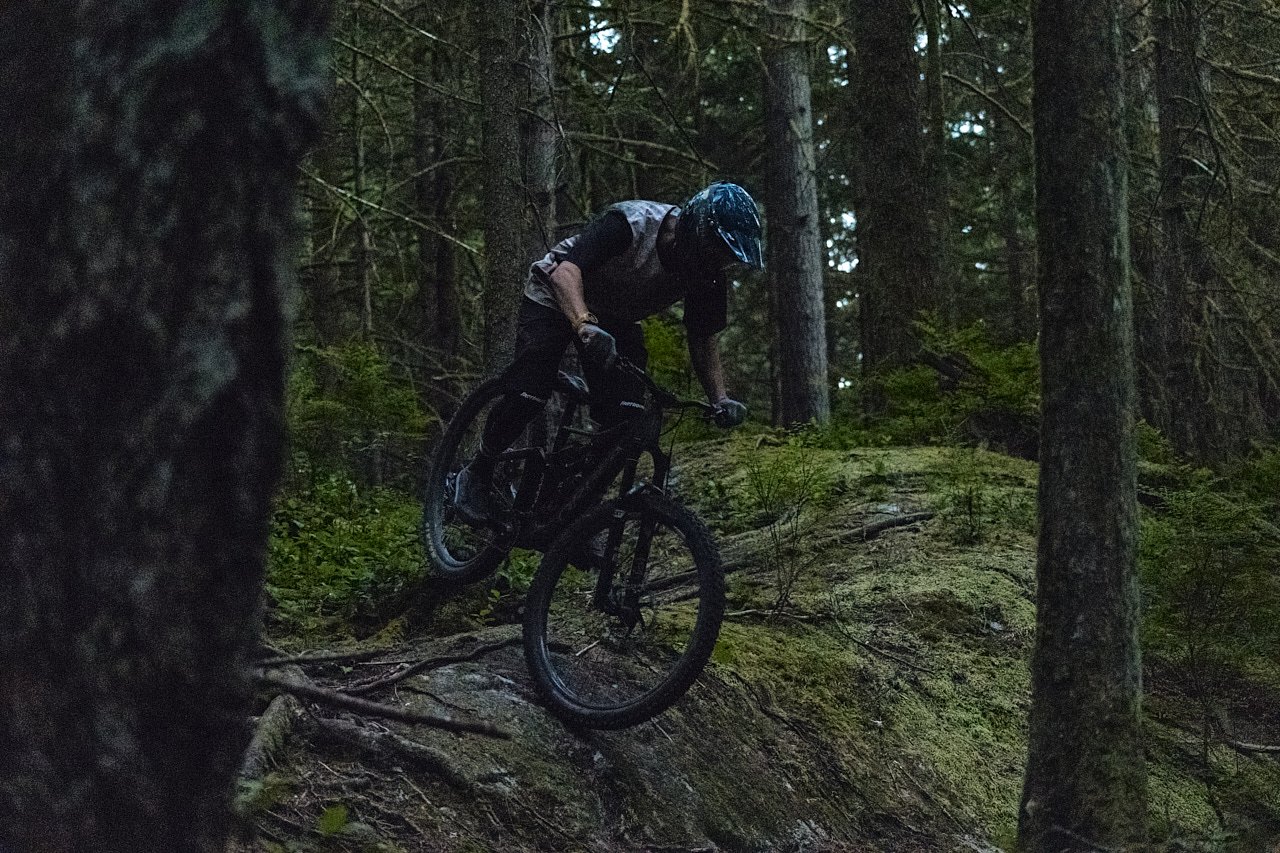
Nose pivot on slick roots... fun!
Cheek pads are held in place via a single button and two hard plastic tabs that slide under the non-removable parts of the helmet foam. They do not move when in use and are still relatively easy to remove for cleaning. I don't imagine they would survive many washing machine cycles, but hand washing should do them just fine. The other pads are secured via hook-and-loop and come out easily. Chuck these in the machine if you dare. You may or may not lose them to the parallel universe washing machines are connected to. I tend to hand wash all my helmet softies. A mix of mild soap and baking soda will do just fine to get the smell out.
The Urge Archi-Deltar sits around 160 Euros or 210 CAD. You do not get Mips or any other rotational impact dissipation technology with the helmet, which is reflected in the price. I think for a helmet that fits this well and feels solid, the Archi-Deltar is worth a look.
5'8"
162lbs
Playful, lively riding style
Photographer and Story Teller
Lenticular Aesthetician
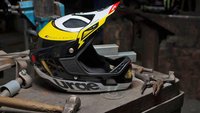
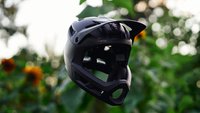
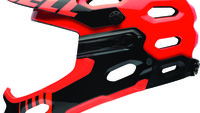
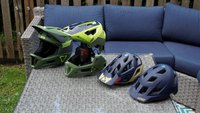
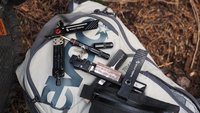

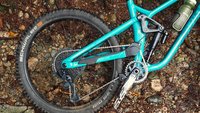

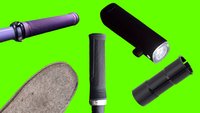


Comments
Cooper Quinn
1 year, 4 months ago
Nice work Bella!
Reply
dbozman
1 year, 4 months ago
The original Urge Enduromatic helmet remains my favorite helmet of all time. For whatever original fits my nugget better than anything before or since.
Reply
AndrewR
1 year, 4 months ago
Photographers shoot riders in a chute - just saying
Reply
Paco77
1 year, 4 months ago
Largest size only 58cm?? What is this, a helmet for ants?!
Reply
mike
1 year, 4 months ago
Love the Urge helmets. Who's the go to for purchases in BC now. MEC was the old spot for these helmets.
Reply
HMBA106
1 year, 4 months ago
Didn’t realize these guys at Urge were still is business. I lost respect for them way back when I ordered the Archi-Enduro (an ancestor to this Deltar) through my lbs. What looked online to be a lightweight, free flowing area at the front of the chinbar was in fact a soft flexible piece of foam. It was such a horrendous design and I’m not surprised to see that there isn’t really anything noteworthy about this design either. Anyways, glad I never crashed hard in that bucket, I have very little faith that the chin bar would’ve stayed intact upon direct impact.
Reply
OldManBike
1 year, 4 months ago
I’m not aware of any mtb helmet brand that’s trying to do less to reduce your concussion risk than Urge. This helmet being the latest example. It’s fairly disappointing, in 2022, to see an NSMB review brushing that away as a quibble for them. But, okay, sure, the metal visor bolt looks pretty.
Reply
Deniz Merdano
1 year, 4 months ago
There are a few price point helmets that do away with Mips. TLD D3 being one of them. Smith Mainline has mips but it makes so much noise in action, that i am about to believe it is distracting enough to cause a crash.
I think there is a place in the market for this helmet to exist.
What kind of safety features would you like to see in a helmet?
Reply
Jerry Willows
1 year, 4 months ago
I like what Kali is doing with soft density foam... MIPS is really annoying.
Reply
cheapondirt
1 year, 4 months ago
My perspective is I'd rather crash in a basic $200 full face than be wearing a MIPS half shell in that crash just because all the light/breathable full faces are $300+.
Yes, anyone with a high end MTB can buy a $350+ lid, it's just not how I see a lot of real-world, emotion-based decision making go down.
Reply
Dogl0rd
1 year, 4 months ago
I think that's because it's hard to know that the expensive stuff really works better. You hope that it does, but you never really know. MIPS may just be marketing.
Reply
Jerek Postuk
1 year, 4 months ago
MIPS and other rotation dampening systems in helmets have been shown to be effective at reducing TBI's. Here is a study that independently tests the effectiveness of MIPS and other systems. If you want to compare helmets to see if the more expensive stuff works better you can look at Virginia Tech's helmet ratings. They independently test helmets and are very transparent with their testing methodology, but they unfortunately don't test full face helmets.
Reply
Pete Roggeman
1 year, 4 months ago
There are so many things wrong with the methodology in there - as in most tests - that I don't think you can draw a ton of great conclusions. Head form (no body), nylon sheath instead of hair, 80 grit sandpaper to simulate a 'road surface' plus a 45º anvil, one speed only, roughly done to simulate travel at 16 km/h (better for some MTB scenarios than road, but not great for either)...and that's just the beginning.
Also, I already addressed VT's study up above - it also has lots of methodology issues and very limited sample sizes. One of their most interesting studies involves football players studied over the course of the year, using a variety of helmet types. They saw a reduction in TBIs, but again, it's not a huge sample size (I think it was 1-2k high school players over one season) and this is all really early days.
You can't just read part of a study and call it good. You have to look a lot deeper and more critically and ask 'are they really testing for conditions we ride in, or is it just based on the standards established for national-level testing', which are even dismissed by helmet designers as being terrible.
There's research, it's just that none of it is very good.
By the way, the same thing applies for the way governing bodies like CEN test things like stems and bars. Their methodologies seem like they were thought up by people who don't understand anything about how bikes are actually used.
Reply
Pete Roggeman
1 year, 4 months ago
The thing is, OMB, and we have been very, very careful to point this out in just about every helmet review in the past: it's not been conclusively proven that Mips reduces your risk of concussion. It hasn't actually been proven that anything reduces your risk of concussion, other than wearing a helmet. There haven't actually been all that many studies done in this regard at all. WAY more money has been spent on marketing than on actual research. The vaunted Virginia Tech research that all the helmet manufacturers like to point towards is obviously a start, but it's not considered conclusive either, and if you read their findings (I have) you'll see that the results they can point to suggest Mips helps, but their studies are not based on huge amounts of research yet (theirs or that of others) and brain science is still so nascent that it's really hard to prove anything.
I'm not saying Mips either works or not, and most of us figure that it's better to be safe in this regard because there's little obstacle other than a few extra bucks. However, it's a bit of a dirty secret in the bike and ski industries that that yellow sticker causes people to buy helmets because Mips is a really successful marketing story (ditto similar systems), but it's still not 100% true.
It makes sense to me anecdotally, as it probably does to you, but that's not conclusive evidence. We're always careful about what we say for that reason. When I choose a helmet, I look for Mips or similar, but I can't write that I KNOW it protects me better than a helmet without it.
So, whether you think it was brushed aside or not, please be aware that we're really conscious of these marketing messages, and that we don't just regurgitate them because the manufacturers use them to sell helmets.
Reply
Jerek Postuk
1 year, 4 months ago
Independent testing has shown rotation dampening systems to be effective in reducing rotational acceleration from oblique impacts. MIPS is effective in this regard as are other rotation dampening systems. While the impact of this reduction in rotational acceleration on concussion prevention is unclear it is your job as a reviewer to present this information and the implications associated with it without regurgitating marketing messages. If you cant present this sort of information without bias you are not reviewing the product effectively.
Reply
Pete Roggeman
1 year, 4 months ago
Jerek, I addressed your identical points above. Quoting one very flawed study does not make the argument as a whole - those results are only from one study. It's not 'conclusive'.
Also, don't lecture me about our jobs as reviewers. We didn't let any bias creep in. It was fairly reported that there is no rotational impact technology in this helmet. If you want a ten-minute disclaimer every single time, I'll just ask this: what's your appetite to read that stuff? Before you answer, how closely did you read the study you are presenting as proof that Mips, etc, all work?
Reply
Jerek Postuk
1 year, 4 months ago
You didn't let bias creep in by refusing to engage with the topic of the helmets effectiveness at preventing injury. No mention of this helmets ASTM cert or its EN 1078 compliance and one sentence about the lack of a rotation impact dissipation system. Considering this information could fit in the spec sheet at the top of the article, I wouldn't be too concerned with my appetite for it.
I read the whole study that I linked to including the methodology. The paper is well cited considering its recency and follows a similar (not identical) methodology to the STAR system used by Virginia Tech. The data also correlates with other research in the field.
Is the impact of these technologies on concussions fully understood at the moment? No, but that doesn't mean nothing can be learned from the research at hand. The current research suggests that rotational acceleration is a significant factor in the prediction of concussions and rotational impact dissipation technologies are effective at reducing that acceleration, at least in a lab setting. Dismissing the entire field of research saying "none of it is very good" with zero qualification to do so is not a very good argument.
Reply
Cooper Quinn
1 year, 4 months ago
"Independent testing has shown rotation dampening systems to be effective in reducing rotational acceleration from oblique impacts. MIPS is effective in this regard as are other rotation dampening systems. While the impact of this reduction in rotational acceleration on concussion prevention is unclear..."
This is some textbook McNamara Fallacy.
And I say that as someone who owns multiple helmets, all with MIPS. Hell, my 21mo old kid wears a MIPS helmet - why not, right? But the only real reason there is "it probably doesn't hurt". There's no real hard data that I'm aware of that demonstrates its better.
Reply
Please log in to leave a comment.